¶ Introduction
Any manoeuvre not required for normal helicopter instrument flying is an unusual attitude and may be caused by any one or a combination of factors, such as turbulence, disorientation, instrument failure, confusion, preoccupation with flight deck duties, carelessness in cross-checking, errors in instrument interpretation, or lack of proficiency in aircraft control.
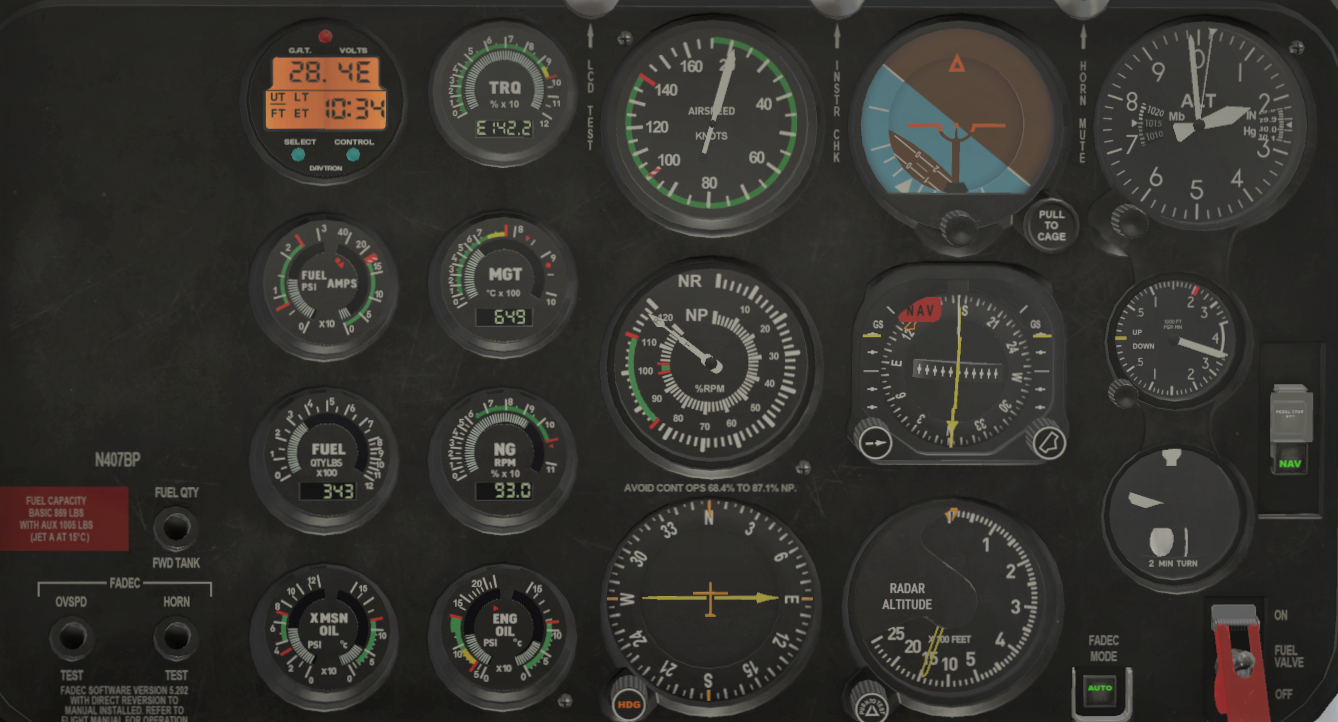
As soon as an unusual attitude is detected, make a recovery to straight-and-level flight as soon as possible with a minimum loss of altitude.
To recover from an unusual attitude, a pilot should correct bank-and-pitch attitude and adjust power as necessary.
All components are changed almost simultaneously, with little lead of one over the other.
If the helicopter is in a climbing or descending turn, adjust bank, pitch and power.
- The bank attitude should be corrected by referring to the turn-and-slip indicator and attitude indicator
- Pitch attitude should be corrected by reference to the altimeter, airspeed indicator, VSI and attitude indicator.
- Adjust power by referring to the airspeed indicator and manifold pressure/torque
¶ Example
¶ Situation
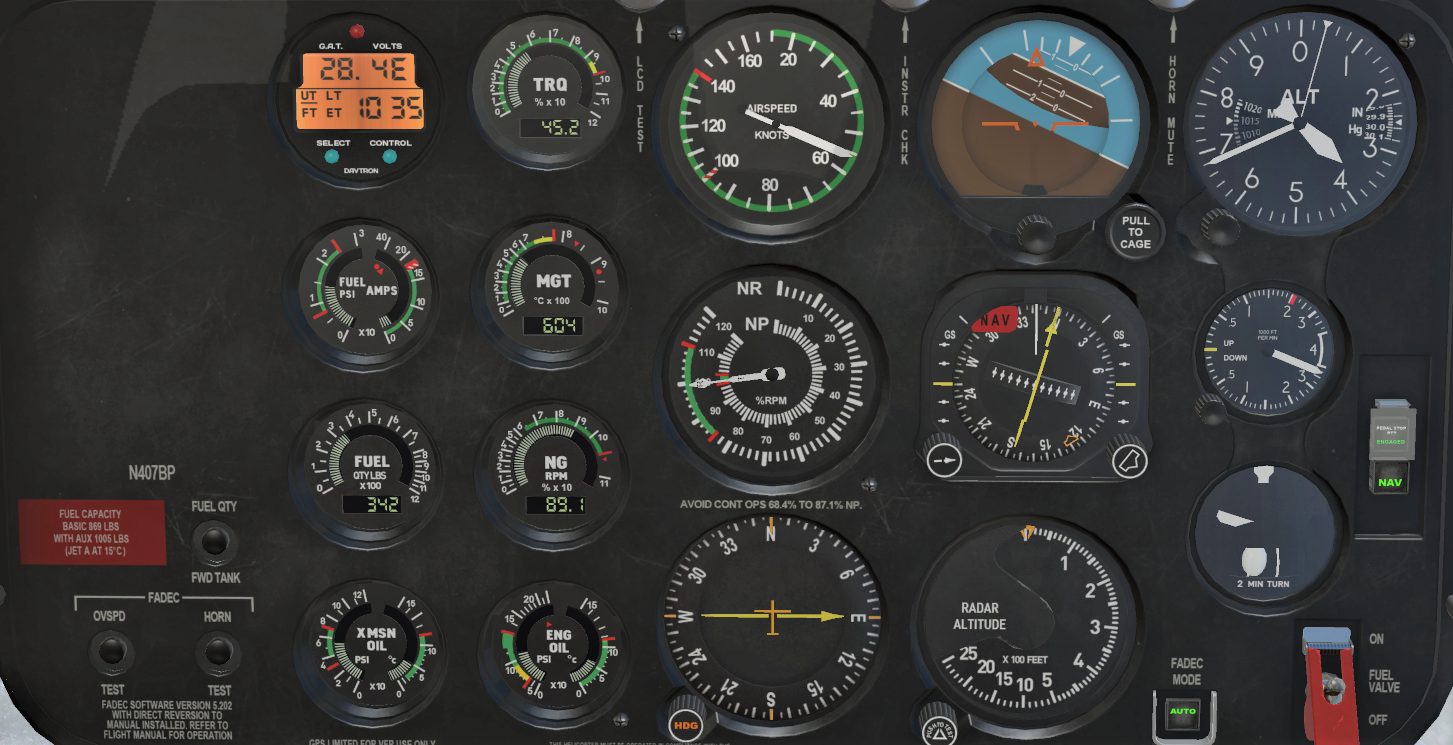
Aircraft is in a banked left and pitched down attitude. VSI shows a high rate of descent and turn and slip indicator confirms the situation.
In case of a delayed corrective action air speed will increase dangerously.
¶ Corrective Actions
¶ 1- Adjust Bank Attitude
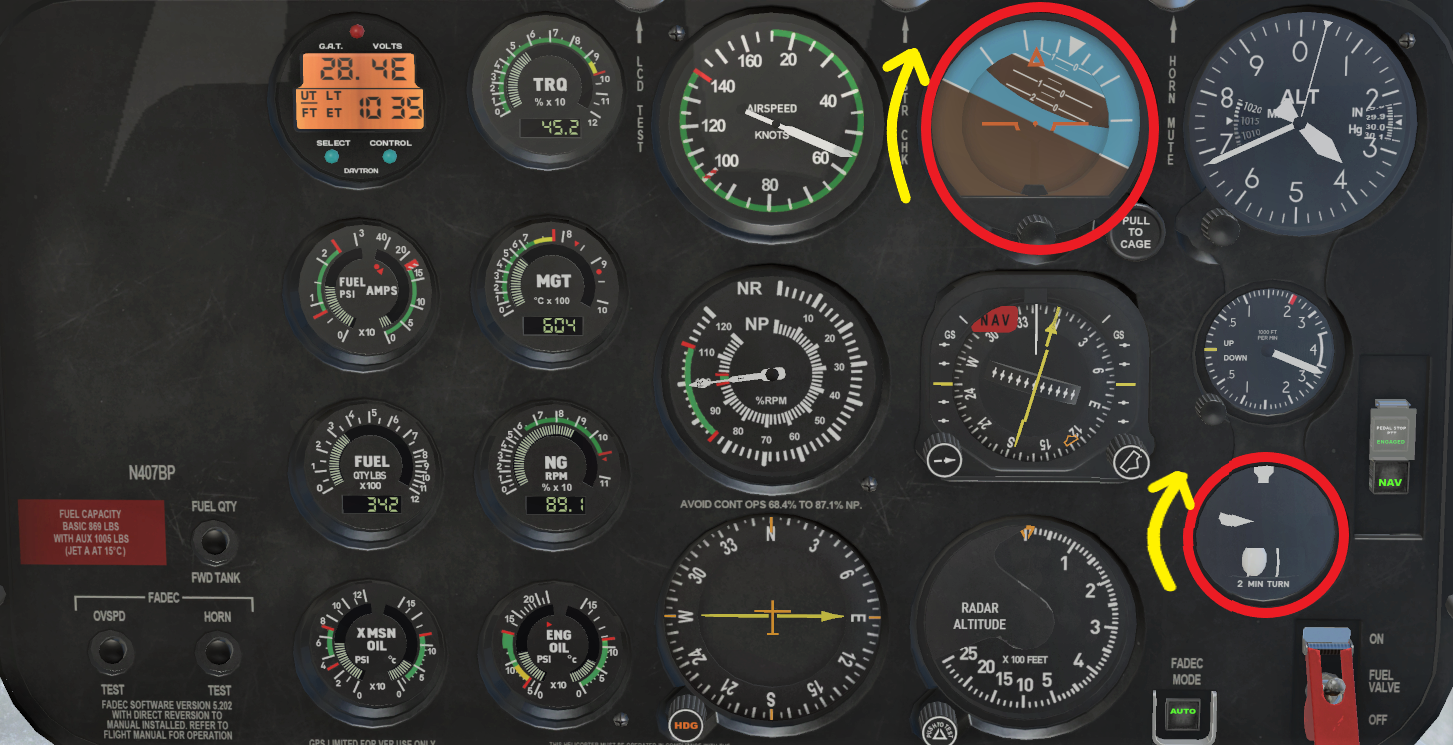
First action is applying enough right cyclic to correct bank attitude and enough left rudder to ensure trimmed flight.
Reference instruments are turn-and-slip indicator and attitude indicator.
¶ 2- Adjust Pitch Attitude
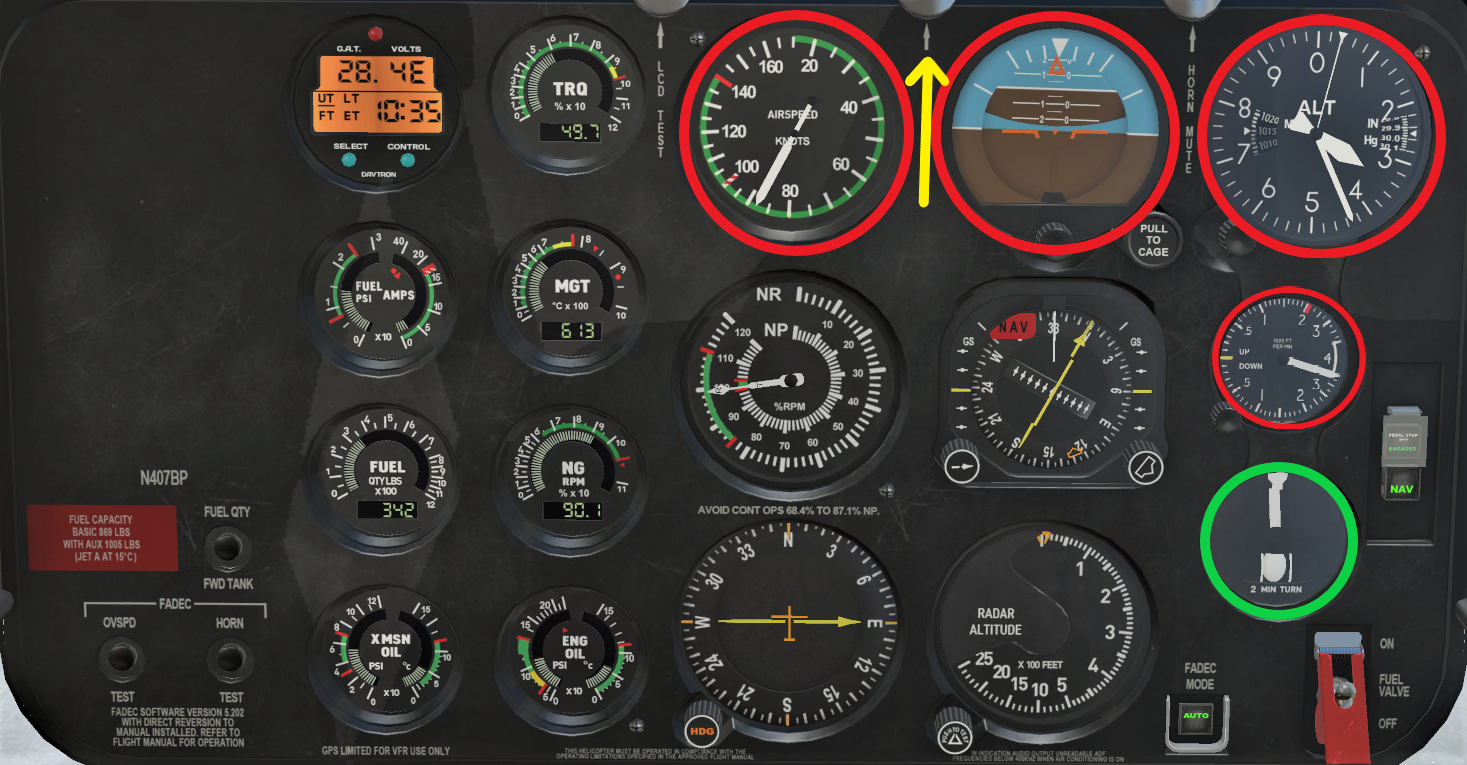
Second action is applying enough back cyclic to correct pitch down attitude.
Cyclic application should be in coordination with VSI to ensure a zero climb and descent attitude.
Reference instruments are altimeter, airspeed indicator, VSI and attitude indicator.
¶ 3- Adjust Power
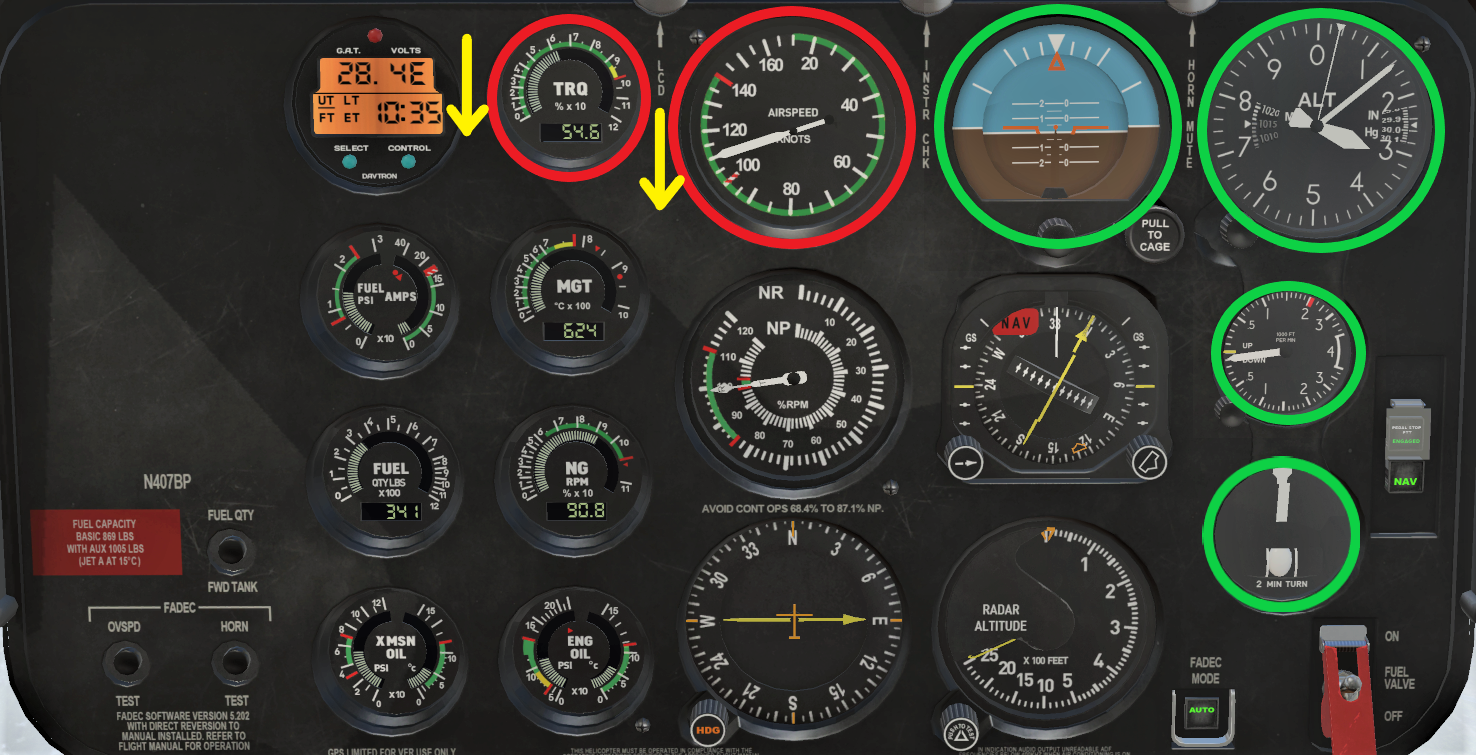
Last action is to adjust power to ensure a level flight at desired airspeed and altitude.
Reference instruments are airspeed indicator and manifold pressure/torque
¶ 4- Straight and Level Flight
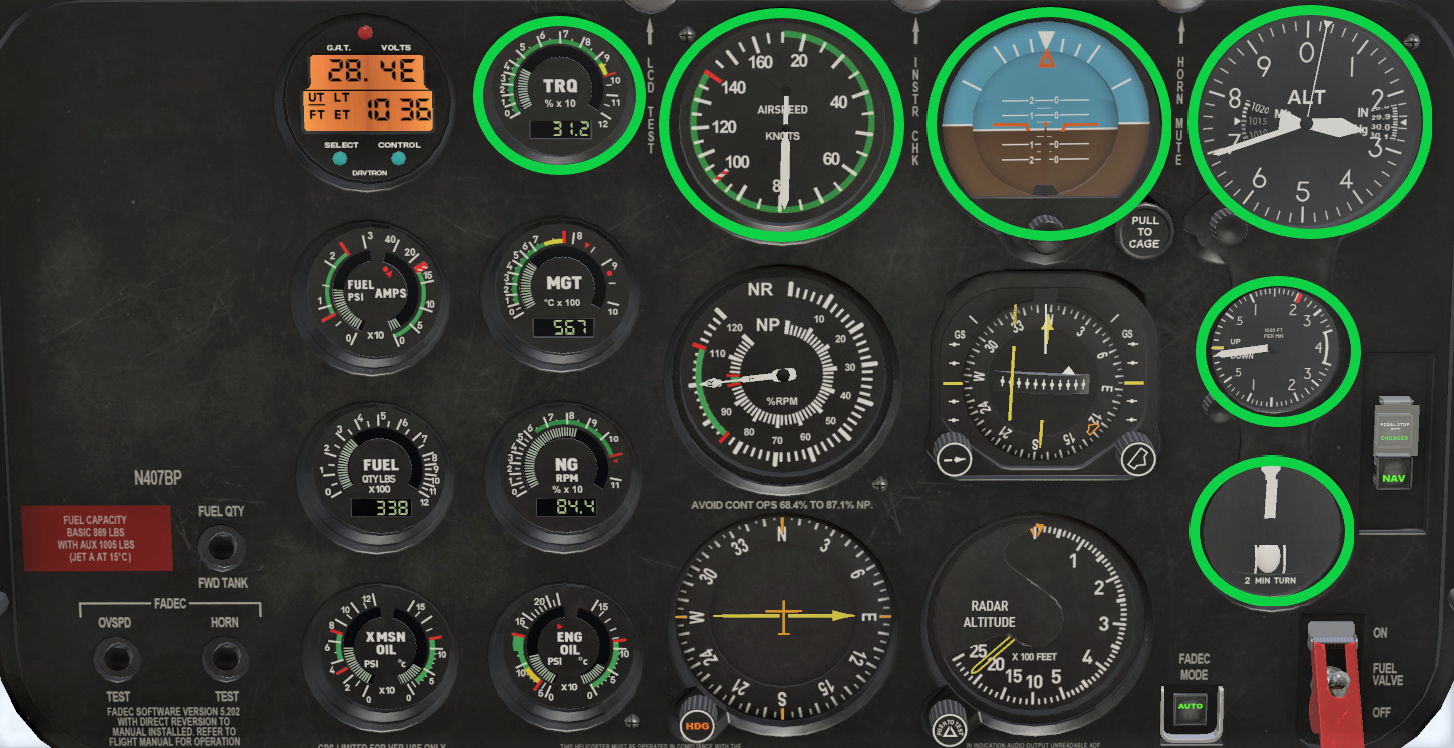
Now the aircraft is in Straight and Level Flight.
- None
- Instrument Flying Handbook (FAA-H-8083-15B)
- VID 522050- Creation
- VID 496402 - Wiki.js integration